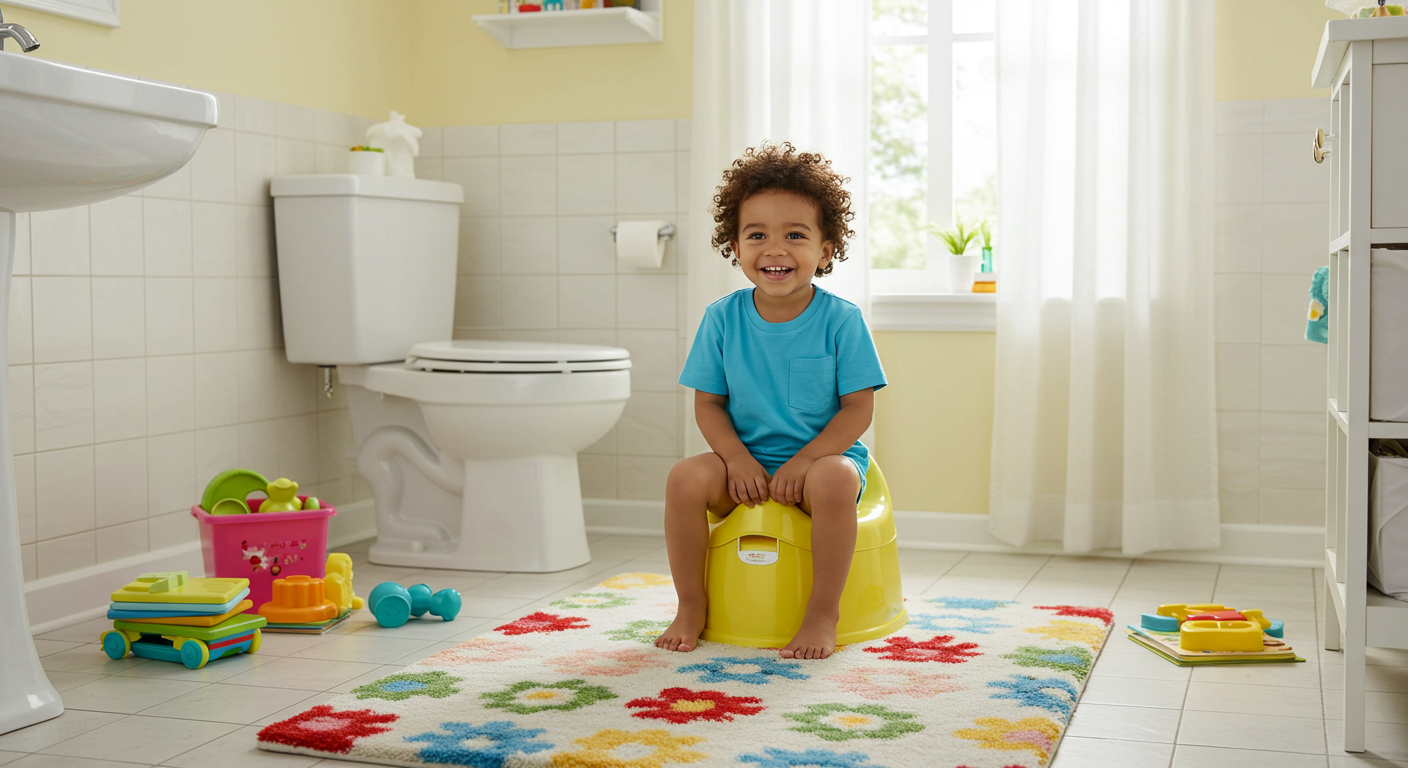Potty Training in Three Days:
Complete Step-by-Step Guide (Day One)

Potty training your child doesn’t have to be a months-long struggle. With a structured approach, consistency, and the right tools, many families find success using the "Potty Training in Three Days" method. This guide is designed for all children, including those with signs of autism or other developmental differences. Our focus is on knowing when to start, gathering the necessary tools, and implementing a clear, engaging routine that keeps your child motivated and excited.
When to Start the Potty Training in Three Days Method
Before diving into day one of the potty training in three days process, it's crucial to determine whether your child is truly ready. Readiness signs include:
- Staying dry for at least two hours
- Showing interest in the bathroom or adult toilet habits
- Telling you when they’re wet or dirty
- Having the ability to follow simple instructions
If your child exhibits several of these signs, it's time to gather your tools and prepare for a big milestone!
Potty Training Essentials

To get started with the potty training in three days method, you'll need:
- Training potty or child-sized toilet seat
- Cloth training underwear (thicker than regular underwear)
- Vinyl covers to reduce messes
- Free potty charts (available for download)
- Reward items (stickers, small treats, coloring pages)
- Certificates of achievement
- Timer or alarm to remind about potty attempts
- Extra clothes, cleaning supplies, and patience!
Day One: Intensive Kick-Off
This is the most demanding day of the three, so try to clear your schedule. Make sure your child is well-rested, and consider arranging for siblings to spend the day elsewhere to limit distractions.
1. How to Start
Give your child a small breakfast and plenty of fluids. You want them to need to use the potty frequently, which creates many opportunities to practice. Keep snacks light, as you'll be using special treats as reinforcers throughout the day.
2. Use a Potty Training Doll (Optional)
An anatomically correct doll that drinks and wets can help children understand the concept of toileting. Here’s how to use it:
- Put doll in big kid underwear.
- Assist your child in feeding the doll a bottle.
- Allow your child to see that the doll is dry and pretend to give the doll a small treat while praising “Good job staying dry!”
- Have the doll accidentally wet his/her pants and show your child the doll is wet, then say “Uh Oh! It looks like (name of doll) needs to practice going potty!”
- Go to different parts of the house, then run to the toilet and place the doll on the potty. Do this 2-3 times.
- Change the doll’s pants to dry and give the doll another pretend reward with praise for staying dry.
- About 5 minutes later say “What’s that (doll name)? You have to go potty?” Then take the doll and have it go on the toilet.
- Go crazy with excitement, give the doll a pretend reward, praise, high five, and do a potty dance all around the house with your child singing “(Doll name) went pee on the potty, (doll name) went pee on the potty!”
- Talk about what a big kid (doll name) is!
This method models behavior and allows your child to become the teacher, reinforcing their learning.
3. Celebrate the Big Kid Milestone
- Get rid of diapers (except during naps and nighttime)
- Dress your child in cloth training underwear
- Present them with a Big Kid Certificate (free download)
- Have a mini celebration—balloons, stickers, music—to create a positive association
4. Create a Schedule
Set a timer for every 15 minutes. Encourage your child to sit on the potty, even if they don’t go. When they do use the potty, celebrate:
- High-fives
- A happy dance
- Singing “(Child’s name) went pee on the potty!”
- Give a small treat and sticker for the chart
Between potty attempts, allow only potty-related activities. This keeps focus on the training so that hopefully, you really only need to do potty training in three days!
5. Encourage Dryness Awareness
Every 5–10 minutes, check your child’s underwear. If dry, say “Good job staying dry!” and give a small reward. This reinforces bladder awareness and builds confidence.
Accidents are part of the learning process. Stay calm and positive:
- Avoid scolding
- Say, “Uh oh, it looks like you need to practice going potty!”
- Lead them to the potty 5–10 times from different rooms to build muscle memory
- If resistance or aggression occurs, reduce the practice to once per accident
- Use a neutral tone: “Pee and poop go in the potty.”
7. Special Tricks for That First Success
Some kids struggle to urinate on the potty the first time. Try placing their feet in warm water while running the faucet—this sensory cue can trigger urination.
8. Important Reminders
- Boys and girls should sit down to potty during initial training
- Avoid using disposable training pants during the day—they mask accidents and reduce learning
- Keep encouraging and observing. The goal for Day One is for your child to urinate in the toilet independently by the end of the day
Once your child successfully uses the toilet independently without a prompt, you’re ready to move into Day Two: the Maintenance Phase of the potty training in three days method. This next stage will gradually reduce reminders and increase confidence.
Continue using your free potty chart, coloring pages, and certificates as motivational tools throughout this journey. Keep reading for Day Two tips that maintain momentum and prevent regression!
If you haven't already, be sure to check out my ebooks, now on Amazon!


